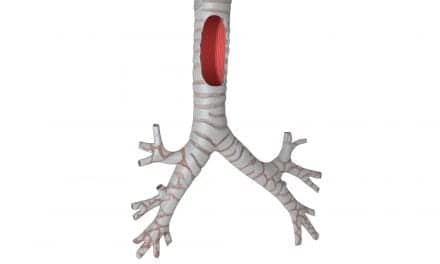Researchers at The Saban Research Institute of Children’s Hospital Los Angeles (CHLA) have developed a new model for studying neonatal respiratory distress syndrome (RDS), a restrictive lung disease that effects newborn babies. The study, published in PLOS ONE, describes the first model that allows investigators to consider the chronic effects of developmental lung disease. According to Medical Xpress, prior studies have reported that babies with RDS have low levels of vascular endothelial growth factor (VEGF), which is known to have a central role in formation of the lung’s branching structure in addition to the development of alveoli and blood vessels.
The model developed at CHLA studied full-term mice with a genetic manipulation to evaluate the long-term effects of abnormal VEGF levels, and the research team was able to observe the mice for 3 months until lung development was complete. Minna Wieck, MD, first author of the study and an investigator and surgical resident at CHLA, says, “By ‘turning down’ VEGF signaling, we found that it was enough to ‘turn on’ lung disease, even in full term animals who weren’t on oxygen and didn’t have other problems.”
The Medical Xpress news report indicates that by overproducing a decoy receptor that binds VEGF, the team at CHLA was able to replicate the key features of RDS, including low surfactant levels. Overall, when mice with this genetic change grew into adults, they showed abnormal restrictive lung function, which may have significant implications in the treatment and prognosis of children with neonatal lung disease.
“Babies with respiratory problems often grow up to be adults with respiratory problems,” explains Tracy Grikscheit, MD, a principal investigator at The Saban Research Institute of CHLA. “Our goal is to be able to find new ways to intervene very early to significantly impact the quality of life for our patients. Now we can investigate the various factors that severely impact the lung development of premature babies and to more specifically target future human therapies.”
Grikscheit, the senior author of the study, says the new model mimics the condition and will enable scientists to better determine the mechanism that drives the long-term effects that can lead to disease.
Photo Credit: Grikscheit Lab, The Saban Research Institute of Children’s Hospital Los Angeles
Source: Medical Xpress










